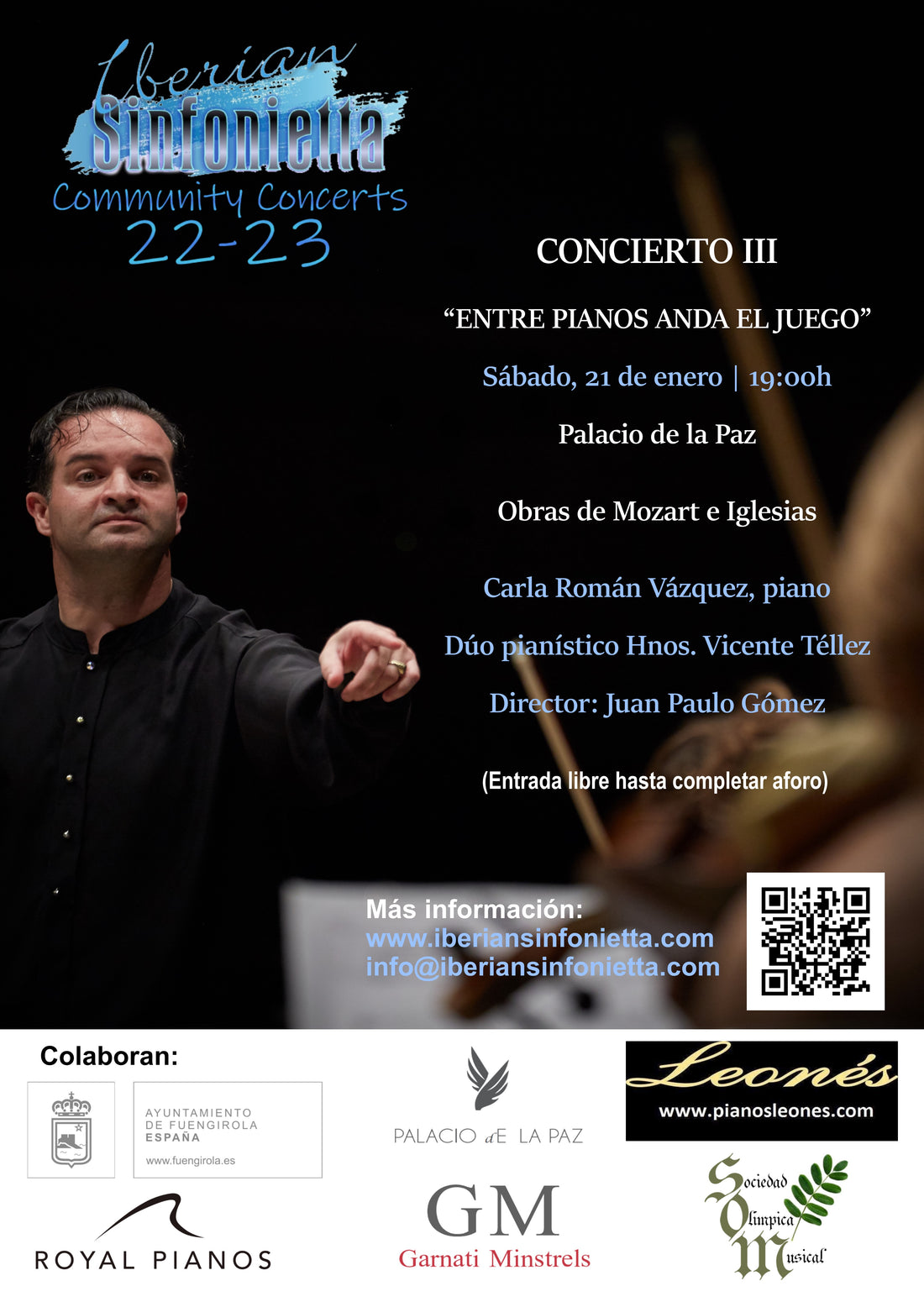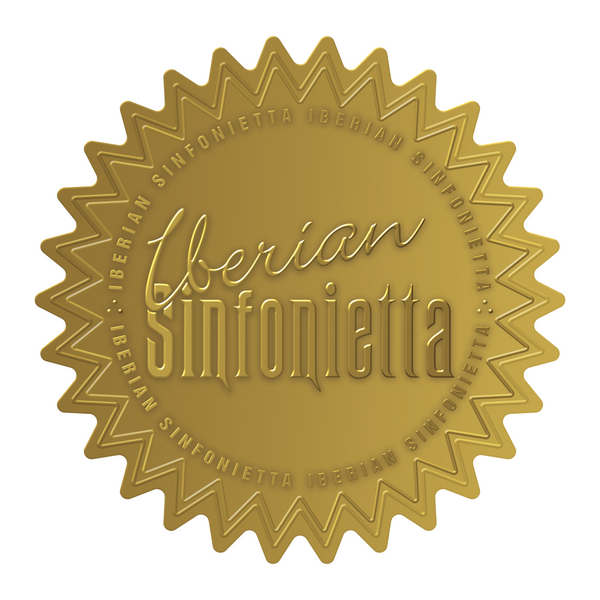
BETWEEN PIANOS THE GAME WALKS: SOMETHING MORE ABOUT THIS PROGRAM
Dear public,
This Saturday, as you know, we will meet again with another proposal from Iberian Sinfonietta . It will be at 7:00 p.m. at the Peace Palace in Fuengirola. Throughout several entries in this blog we have been able to learn about aspects of the Concert, today we will add a final overview focusing on the repertoire.
The concert is made up of three works, the first two by Mozart and the last, an absolute premiere by José Iglesias González . The first work will be for piano and orchestra and the last two for two pianos and orchestra, hence the title of this Concert “between pianos the game goes”.
The first work we will enjoy will be the Concerto for piano and orchestra No. 9 in Eb major KV.271 “Jeunehomme”. It is called that because it is the name of the daughter of a great friend of Mozart , a very important dancer who saw that his daughter had great piano skills, and who better than Mozart to compose a great work for his daughter, Victoire Jenamy, to shine. . But it turned out that not only was it a great work, it is an essential work in Mozart 's Salzburg period. In fact, it seems to be a work of absolute maturity from his Viennese period. The piano provides absolute personality, independence from the orchestra and very intense orchestra-piano dialogues. Mozart composed it in 1777 at the age of 21 and had it in such high esteem that he took it on his trips to Mannheim and Paris to perform it and show his musical abilities with it. In fact, years later, he returned to the work and wrote new cadences. The work is highly regarded by critics, with Charles Rosen calling it "perhaps the first unequivocal masterpiece of the classical style." Alfred Brendel considers it "one of the greatest wonders of the world" and the great musicologist specializing in Mozart , Alfred Einstein, dubbed it the "Mozart Eroica."

The second work of Saturday's Concert will be the Concerto for two pianos and orchestra No. 7 in F major, K. 242 , known as "Lodron." This is a previous work, composed a year before "Jeunehomme". It is a work commissioned by Countess Antonia Lodron for her two daughters Alysia and Giuseppa. Later, since it was originally for three pianos, the version that remained for posterity is that of 1780, when it eliminated one piano and left only two; something that Mozart did in order to adapt it for himself and a pianist friend. The Concerto for Two Pianos is carefree and happy on its surface, but only that, on the surface, Mozart was not one of those who shied away from challenges and it was not at all difficult for him to transfer the beginning of the dialogue to the two solo pianos without neglecting the accompaniment orchestral and extracting an admirable match.

Finally, the third work of the afternoon will be an absolute premiere by José Iglesia González , who presents his Fantasía for two pianos Op. 36. Of this work, the one who can speak better than anyone is its creator, who already told us (his interview is in a previous blog entry) that aims to recreate the universe of melodies and sensations that his stay in Rio de Janeiro provoked in him.
Not to miss it.
Jorge Rodríguez Morata
Pedagogical content coordinator
